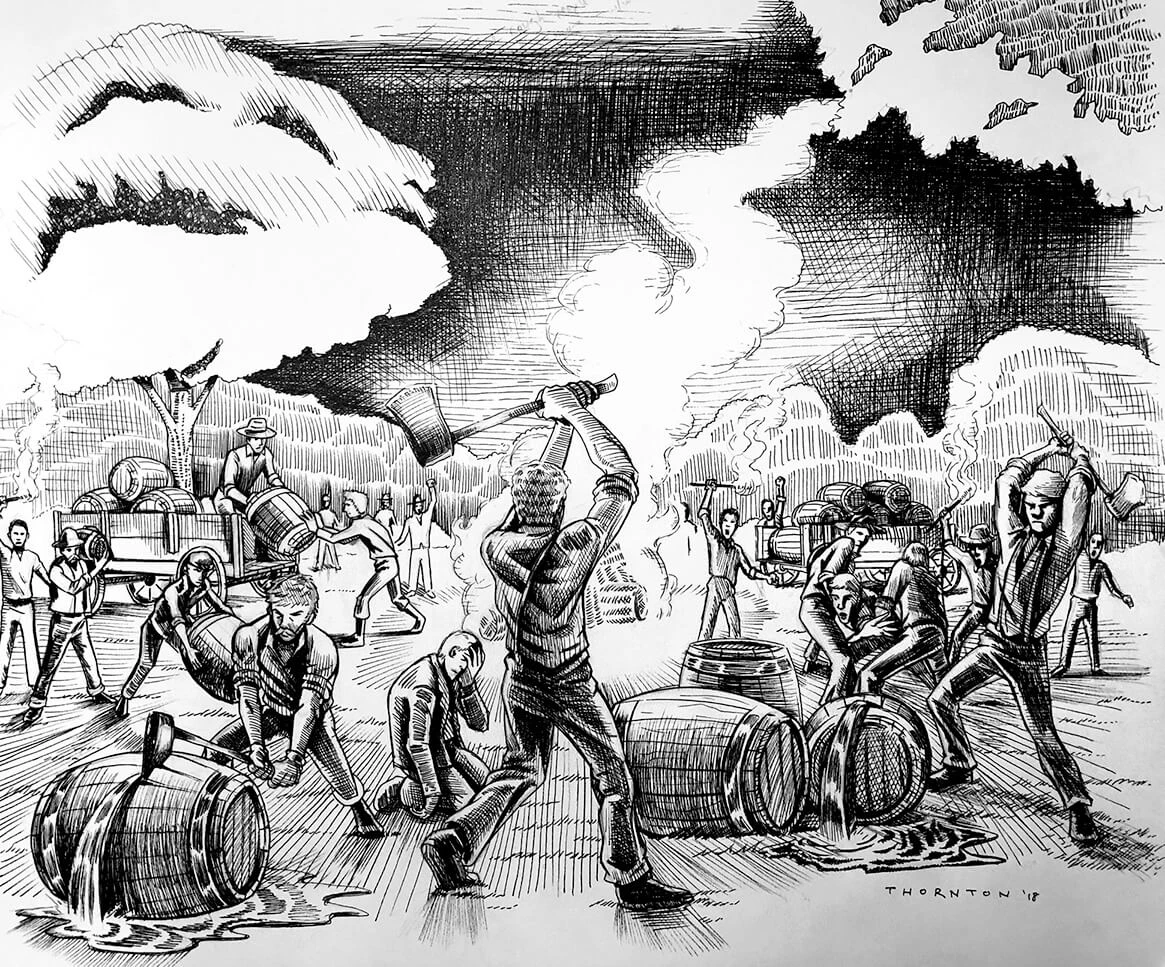Search
Looking for something in particular? Search for it here.
Looking for something in particular? Search for it here.
In 1854 Bloomington’s newly elected city council passed a strict prohibition ordinance. They believed the measure would dramatically reduce the growing number of crimes in the city, which they attributed to drinking. When the ordinance was passed, Bloomington’s mayor was John Ewing. A migrant from the south, Ewing continued to license saloon owners as he did not believe in Temperance.
Bloomington’s saloon owners were happy to pay the licensing fees, and their many customers were happy to be served. Neither the saloon owners or their customers liked the temperance supporters.
In 1855 Franklin Price, an “anti [saloon]-license” candidate, ran for Bloomington mayor and won the election. Price noted during his campaign that the railroad boom “brought a different class” to Bloomington, transforming a “well-behaved citizenry into one rougher around the edges.”
Soon after the election, Mayor Franklin Price began closing down the saloons and raiding establishments that were selling liquor illegally. What followed became known as the “Whiskey Rebellion.”
On July 9 Price investigated a saloon on Front Street. Inside he “discovered a whiskey mill in full working order.” A belligerent barkeep had strong words for Price and sucker-punched him as he left the business.
Later that evening a mob of men and boys (all Whigs according to the Pantagraph report) with stones, axes, and crowbars broke into the Front Street saloon and two other “groggeries.” They destroyed all the barrels of whiskey and liquor they found.
On August 10 Marshall Ephraim Plat, police officers Alexander Steele and Alfred Davidson, and Mayor Price raided 10 more establishments, seizing 50 barrels each of brandy and cherry bounce, 50 casks each of “high wine,” brandy, gin, and whiskey.

The plunder was loaded on wagons and taken outside the city followed by a crowd of Know-Nothing vigilantes armed with clubs and knives. The barrels and bottles “were smashed by axes and other implements and the liquors washed the Prairie.” In the melee liquor sellers who tried to protect their goods were attacked, including the man who punched Mayor Franklin in July. He was hit on the head causing serious damage.

Among the businesses that were raided was one belonging to Reynolds and Fuller, who took the city to court for destruction of private property.
The jury found for the plaintiffs, and the city had to pay $600 in damages.
Who determined whether the consumption of alcoholic beverages was moral/immoral?
Under what circumstance(s) would it be right for one person to determine whether a law should / should not be enforced?